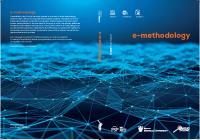E-contact tracing of hospital infections – validation of SIRSZ automatic risk assessment
E-contact tracing of hospital infections – validation of SIRSZ automatic risk assessment
Author(s): Andrzej Jarynowski, Ireneusz SkawinaSubject(s): Health and medicine and law, Social Informatics
Published by: Fundacja Pro Scientia Publica
Keywords: e-health; hospital infections; tele-medicine; epidemiological modelling; support decision system; epidemiological intelligence
Summary/Abstract: Aim. Contact networks play a crucial role in infectious disease propagation and position in the network mediate risk of acquiring or sending infections. We studied the spread of hospital-associated infections through computer simulations and validated our ‘computer assisted’ risk assessment with ‘human’ risk assessment in a prospective study.Concept. We collected time-varying structure of contacts and covariates reconstructed from Polish Hospitals:1. The organisational structure is mapped by a set of questionnaires, CAD maps integration, functional paths annotation and local vision. It is done mostly by surveys within medical staff through an interactive web application.2. The Cohabitation layer processes data from the registry of patient admissions and discharges from each hospital unit (wards, clinics, etc.) and medical shift register. With simulated infection paths, we were able to compute network centrality measures for patients. We obtained the risk of getting infected, based on the patient’s incoming connections, and the risk of spreading infections resulting from outgoing connections. We compare various standard centrality measures – position of patients and staff in contact networks (‘computer assisted’ risk assessment) of both contacts and paths networks, with a predictor of ‘human’ risk perception (based on 190 patients).Results. We showed that the best predictor of HAI risk is Adjusted Rage Rank on paths (r= 0.42, p < 0.01). However, surprisingly good predictive power in risk assessment was found in the betweenness centrality of the underlying network of contacts (r = 0.30, p < 0.01).Conclusion: We conclude that epidemiology of a given pathogen in a given place and time could be explained only with the contact network only to a large extent. However, further possibility of the collection, processing and storage of the data on individual persons, translated to mathematical modelling could lead in future to satisfactory improvement in risk assessment.
Journal: e-methodology
- Issue Year: 7/2020
- Issue No: 7
- Page Range: 51-70
- Page Count: 20
- Language: English

